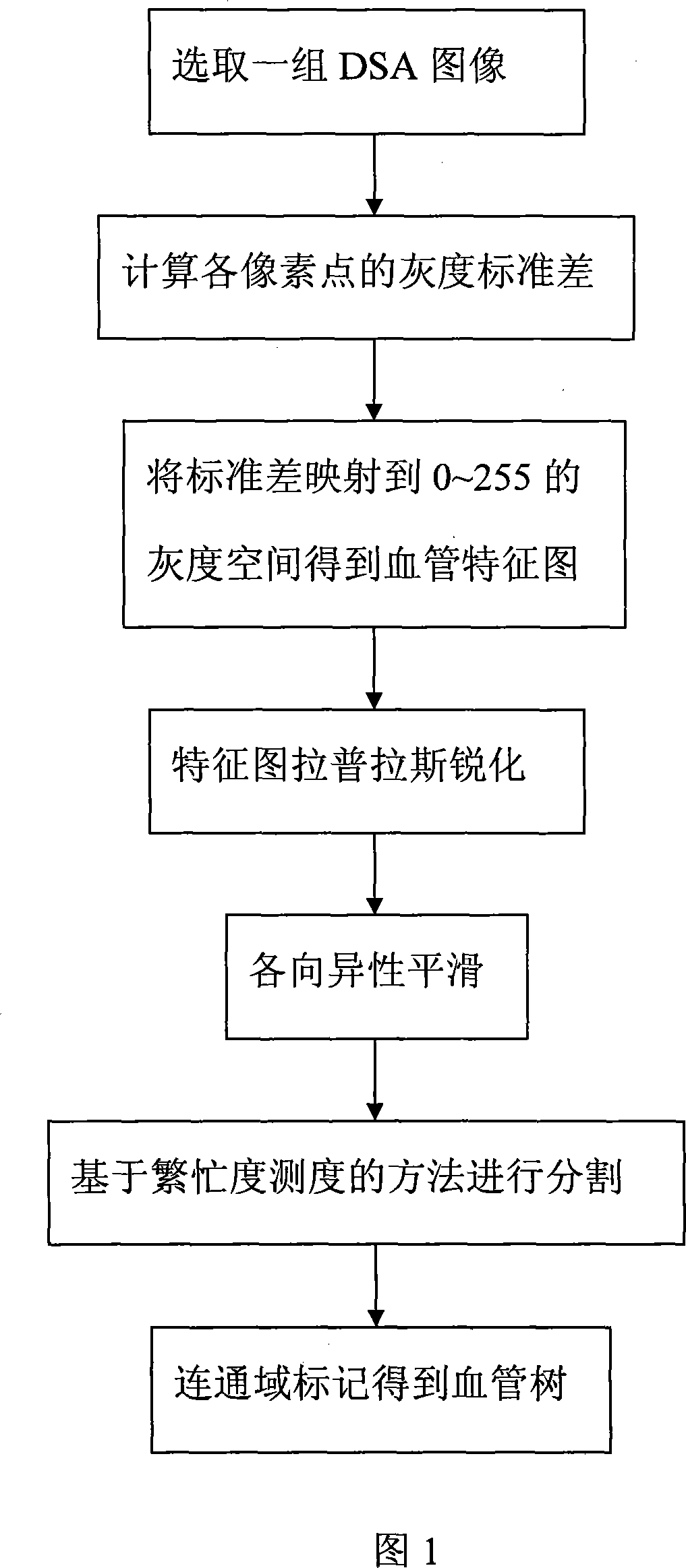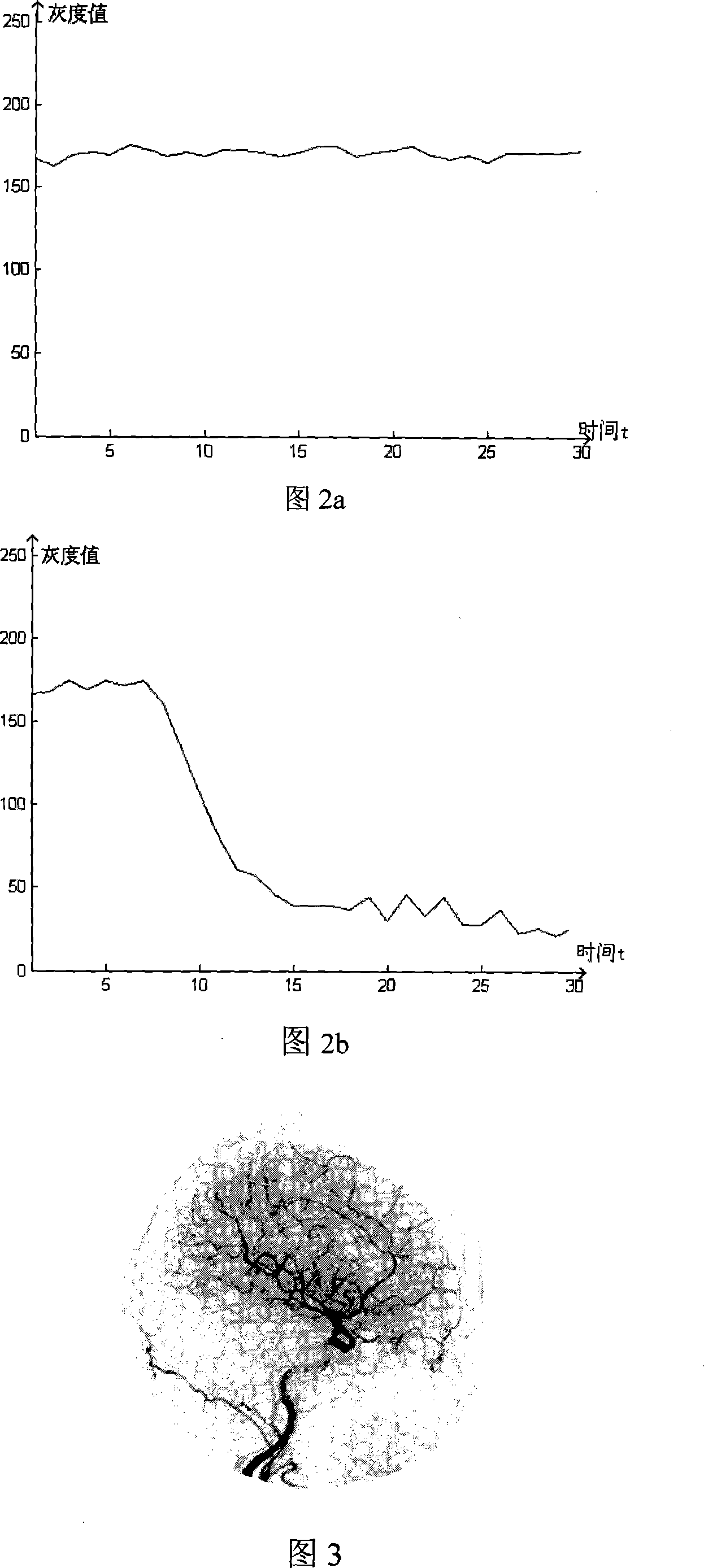Method for segmenting blood vessel data using serial DSA image
A digital subtraction and angiography technology, which is applied in the field of medical imaging, can solve the problems that the segmentation effect cannot detect fine blood vessels, can not achieve the denoising effect, and is unreasonable
- Summary
- Abstract
- Description
- Claims
- Application Information
AI Technical Summary
Problems solved by technology
Method used
Image
Examples
Embodiment Construction
[0029] Typical embodiments of the present invention will be described below in conjunction with the accompanying drawings
[0030] Example of the present invention comprises the following steps:
[0031] (1) Select an image sequence, denoted as I(x, y, t), the image sequence I(x, y, t) includes all the images from the beginning of injection of contrast agent to the process of diffusing into blood vessels, and this one The series of images are digital subtraction angiography images registered in time;
[0032] (2) Calculate the gray standard deviation value of each point on the image in the time domain, the calculation formula is: S ( x , y ) = 1 T Σ t = 1 T ( ...
PUM
 Login to View More
Login to View More Abstract
Description
Claims
Application Information
 Login to View More
Login to View More - R&D
- Intellectual Property
- Life Sciences
- Materials
- Tech Scout
- Unparalleled Data Quality
- Higher Quality Content
- 60% Fewer Hallucinations
Browse by: Latest US Patents, China's latest patents, Technical Efficacy Thesaurus, Application Domain, Technology Topic, Popular Technical Reports.
© 2025 PatSnap. All rights reserved.Legal|Privacy policy|Modern Slavery Act Transparency Statement|Sitemap|About US| Contact US: help@patsnap.com



